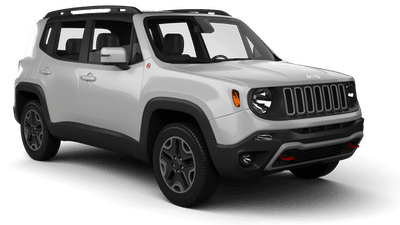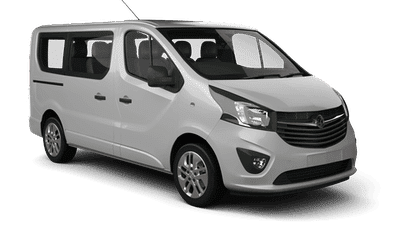Most Requested Car Rental Locations in Canada
- Edmonton International Airport
- Hamilton John C. Munro International Airport
- Halifax / Stanfield International Airport
- Kelowna International Airport
- Ottawa Macdonald-Cartier International Airport
- Quebec Jean Lesage International Airport
- Regina International Airport
- Gander International Airport
- Montreal Trudeau International Airport
- Vancouver International Airport
- Winnipeg - James Armstrong Richardson International Airport
- Cranbrook - Canadian Rockies International Airport
- Saskatoon John G. Diefenbaker International Airport
- Abbotsford International Airport
- Whitehorse - Erik Nielsen International Airport
- Calgary International Airport
- Victoria International Airport
- St. John's International Airport
- Toronto Pearson International Airport
- Yellowknife International Airport
Introduction to Car Rental in Canada
Canada, with its expansive territories, diverse landscapes, and vibrant cities, is best experienced through the freedom of a self-driven car. Renting a car in Canada has never been easier, thanks to user-friendly websites like Rentacarscanner.com. Our platform lets you compare rates from over 25 different car rental brands, ensuring you get the best deal possible for your journey.
Our new website is designed to provide the most efficient and cost-effective way to book a rental car in Canada. With an intuitive interface and a wide range of choices, it offers a platform where you can easily compare prices, vehicle types, and rental conditions from more than 25 car rental companies. The site also offers secure online payment options and instant booking confirmation, making the booking process hassle-free.
There are numerous car rental companies operating in Canada, both local and international. Brands like Avis, Enterprise, Hertz, and Budget are internationally recognized and offer dependable services. Local Canadian companies such as Discount Car and Truck Rentals, Turo, and Driving Force also provide excellent service, often with a more personal touch.
By using Rentacarscanner.com, you can easily check prices and offerings from all these companies to find the best fit for your needs.
Renting a Car at the Airport in Canada: A Convenient Choice
Renting a car at the airport upon your arrival in Canada offers a plethora of benefits that can contribute significantly to a smooth and enjoyable travel experience. It is an option that combines convenience, flexibility, and time-saving aspects, providing an excellent starting point for your journey.
Firstly, the convenience factor is undeniable. Most international and many regional airports in Canada host a variety of car rental agencies. Companies like Avis, Budget, Enterprise, Hertz, and local Canadian firms such as Discount Car and Truck Rentals have desks in the airport terminals.
This means you can step off your plane, collect your luggage, and be on your way without the need for further transit or waiting for shuttle buses.
Secondly, airport car rentals offer an unrivaled selection of vehicles. Whether you're traveling solo, with a partner, as a family, or in a large group, you'll find a vehicle to suit your needs. From compact cars for city driving, to SUVs ideal for tackling Canada's scenic routes, or even minivans for larger groups, the choice is yours.
If you're planning to explore the more remote parts of Canada, many rental companies also offer cars equipped with all-wheel drive.
The third advantage is the flexibility that comes with having your own transportation. Public transportation in Canada is reliable, but having a rental car allows you to move at your own pace, make spontaneous detours, and visit off-the-beaten-path destinations that may be unreachable by bus or train.
You can start your road trip right from the airport, maximizing your travel time and enjoying the freedom to create your own adventure.
It's worth noting that airport car rental agencies often have extended hours of operation compared to those located in city centers. Some even operate around the clock, accommodating passengers on late-night or early-morning flights. This means you can pick up or drop off your vehicle at a time that suits your travel schedule.
Renting a car at the airport in Canada provides a comfortable and convenient start to your trip, letting you hit the road as soon as you arrive.
By comparing prices on platforms like Rentacarscanner.com, you can ensure that you get the best deal, setting the stage for an unforgettable Canadian road trip.
Five Inspiring Road Trips in Canada
The Cabot Trail, Nova Scotia: Winding along the rugged cliffs of Cape Breton Island, the Cabot Trail offers dramatic ocean vistas, quaint fishing villages, and lush forests. It's a 298-kilometer loop that allows you to explore the Celtic and Acadian cultures that have shaped this part of Nova Scotia.
Don't miss the Cape Breton Highlands National Park with its superb hiking trails and the opportunity to spot moose and eagles. Lobster dinners are a must-have along the route!
The Icefields Parkway, Alberta: Renowned as one of the world's most scenic drives, the Icefields Parkway extends over 232 kilometers through the heart of the Canadian Rockies. Starting from Lake Louise and ending in Jasper, it offers unrivaled views of pristine mountain lakes, ancient glaciers, and sweeping valleys.
Visit the Athabasca Glacier and take a thrilling walk on the Glacier Skywalk. Keep an eye out for wildlife such as grizzlies, elk, and mountain goats.
The Sea to Sky Highway, British Columbia: The aptly named Sea to Sky Highway, Highway 99, starts in Vancouver and ends in Whistler. This 121-kilometer route takes you from the ocean's edge, past towering waterfalls, to the top of the mountains.
Points of interest include the Stawamus Chief in Squamish, a haven for rock climbers; the Sea to Sky Gondola, offering panoramic views; and Whistler, a year-round outdoor playground.
The Trans-Canada Highway: For the ultimate Canadian road trip, consider a cross-country adventure on the Trans-Canada Highway. Stretching over 7,800 kilometers, it's one of the longest routes of its kind in the world, traversing ten provinces from the Atlantic to the Pacific.
You'll encounter diverse landscapes ranging from the rugged Newfoundland coastline to the vast prairies of Saskatchewan and the soaring peaks of the Rockies. It's a long journey, so plan your stops and take your time to fully appreciate this remarkable country. The Pacific Rim Highway,
British Columbia: Also known as Highway 4, the Pacific Rim Highway is a 157-kilometer route that leads you to some of British Columbia's most stunning locations. From Parksville, it heads west across Vancouver Island to the surf town of Tofino. Highlights along the way include Cathedral Grove, home to some of the oldest and largest trees in Canada, and the Pacific Rim National Park Reserve, where you can explore the rainforest and enjoy the sandy beaches.
Each of these routes offers a unique perspective of Canada's diverse landscapes and culture. Remember, road conditions can change quickly, and wildlife is common, so drive with care.
Always respect the environment and follow Leave No Trace principles. Happy exploring!
Traffic Rules in Canada
Driving in Canada offers a unique opportunity to explore its vast landscapes and vibrant cities at your own pace. However, before you begin your journey, it's crucial to understand the country's traffic rules.
Here's a comprehensive guide to ensure your driving experience in Canada is both safe and enjoyable.
Driving Side: Just like in the United States, Canada adheres to right-hand driving. The driver’s seat is on the left side of the car, and traffic moves on the right side of the road.
Speed Limits: Speed limits are strictly enforced and are posted in kilometers per hour (km/h). Residential areas typically have a limit of 50 km/h, whereas highways range from 80 to 110 km/h depending on the province. Be attentive to posted signs, especially in school zones, construction areas, and when entering a new province, as speed limits can vary.
Seat Belts and Child Seats: It is mandatory for all occupants of a vehicle to wear seat belts in Canada. Children must also be secured in an approved child restraint system or booster seat. The specific rules regarding child seats can vary by province, so ensure to check local regulations depending on the child's age, weight, and height.
Distracted Driving: Using a handheld device while driving, such as cell phones, is prohibited across all provinces. Most provinces also outlaw other activities that could distract a driver like eating, reading, or using a GPS while driving. It's advised to use hands-free devices if you need to use your phone for navigation or communication.
Driving Under Influence: Canada takes impaired driving very seriously. The legal blood alcohol concentration (BAC) limit is 0.08 percent. Some provinces have lower BAC limits, and penalties can be incurred at a BAC of 0.05 percent. Driving under the influence of drugs is also illegal.
Traffic Lights and Signs: Red means stop and green means go at traffic lights. Right turns on red after coming to a complete stop are allowed in many places, unless otherwise indicated. Always come to a full stop at stop signs, and yield to the right in cases where multiple vehicles arrive at a stop sign simultaneously.
Pedestrian Crossings: Drivers are required to stop for pedestrians at marked crosswalks and intersections. Some cities have pedestrian-controlled lights at crosswalks, so be aware of pedestrians signaling to cross.
Winter Driving: Winter driving can be challenging due to snowy and icy conditions. It's highly recommended, and sometimes legally required, to have winter tires during the colder months. Also, always keep a safe distance from snow removal vehicles and avoid passing them on the right.
Wildlife Awareness: Canada is home to diverse wildlife that can occasionally wander onto roads, especially in rural and mountainous areas. Be extra cautious around dawn and dusk when animals are most active.
Emergency Vehicles: When an emergency vehicle (police, ambulance, fire services) approaches from any direction with its lights flashing, all traffic must stop. On multi-lane roads, drivers must slow down and move over if safe to do so.
Roundabouts: Roundabouts are becoming more common in Canada. Vehicles inside the roundabout have the right of way. When entering, yield to traffic already in the roundabout coming from your immediate left.
Bicycle Lanes: Many cities in Canada have designated bicycle lanes. When driving, it's important to be cautious while opening car doors or making turns across these lanes, as bicyclists have the right of way in these lanes. Be sure to always check your mirrors and blind spots for cyclists before turning or opening doors.
School Buses: If a school bus has its red lights flashing, traffic in both directions must stop. You must remain stopped until the lights stop flashing or the bus starts moving.
Insurance: Car insurance is compulsory in Canada. Ensure you have proper coverage before setting out on your journey. If renting a vehicle, check if your rental agreement includes necessary insurance.
Remember, while these general rules apply across Canada, some traffic regulations can vary slightly between provinces and territories.
So, it's always a good idea to research the specific driving rules of the regions you plan to visit.
Drive safely and enjoy the extraordinary scenic routes that Canada offers!
Book Your Canada Car Rental in 3 Easy Steps
Securing a car rental for your Canadian adventure should be as smooth as the journey itself. Thanks to modern booking platforms, you can arrange your vehicle in just three simple steps.
Here's a straightforward guide on how to book your rental car for your trip to Canada.
Step 1: Search Begin by inputting your travel information into our search engine. We will need your desired pick-up and drop-off locations in Canada, along with the corresponding dates and times. Once you've keyed in your specifics, hit the search button to see the range of available vehicles. The platform will show you options from over 25 different car rental brands, making it effortless for you to compare prices and find a vehicle that matches your preferences and budget.
Step 2: Select Once the search results are displayed, take some time to review the various options. Consider factors like the size of the vehicle, fuel efficiency, price, and any additional features you may need, such as GPS or child seats. When you've found a vehicle that meets your needs, select it. The selection process on RentACarScanner.com is seamless, allowing you to compare options in detail before making your choice.
Step 3: Book After selecting your vehicle, you'll proceed to the booking stage. This typically involves providing further details, like driver's information, and choosing any extras you might need, such as additional insurance or pre-paid fuel. Review your booking to ensure everything is correct, and then finalize your reservation by providing payment information. Once the booking is confirmed, you'll receive a confirmation email with all the necessary details.
Booking a car rental in Canada doesn't have to be a complicated process. With platforms like Rentacarscanner.com, you can easily book your rental car in three simple steps, leaving you more time to plan your Canadian adventure.
Safe travels!



